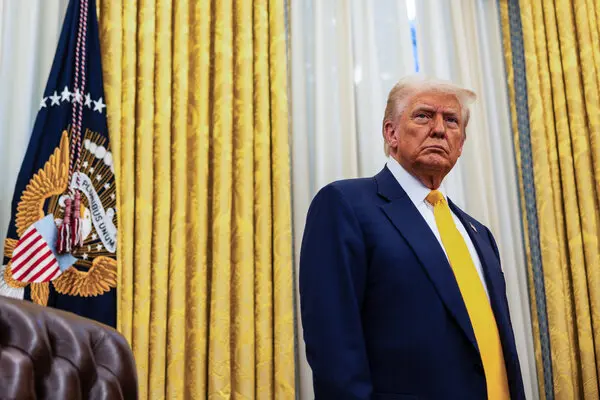The United States Supreme Court on Tuesday paved the way for President Donald Trump to move ahead with his controversial plan to slash the federal workforce.
In a brief order without any noted dissents, the court lifted an earlier injunction that had blocked the administration from proceeding with mass layoffs across government agencies. That initial ruling, issued by District Judge Susan Illston in May, held that such drastic personnel cuts required explicit congressional approval.
The decision follows a lawsuit filed by labor unions and advocacy groups accusing the administration of overstepping its executive authority by ordering sweeping firings and structural reforms without legislative backing.
Since returning to the White House in January, Trump has prioritised downsizing government operations. His February 11 executive order directed agencies to identify and dismiss non-essential staff as part of an extensive restructuring drive overseen by the Department of Government Efficiency (DOGE), formerly headed by Elon Musk.
Meanwhile, in Ghana, the Finance Ministry hailed a milestone in its economic recovery efforts. In a statement on X, it described the latest approval from the International Monetary Fund (IMF) as proof of the country’s commitment to fiscal responsibility and economic reforms, adding that this marked “another decisive step forward” in stabilising the nation’s finances.
President John Mahama, who secured a resounding re-election victory in December, has pledged to revive Ghana’s economy and renegotiate aspects of its $3 billion IMF deal. The IMF, for its part, said the new administration has already made significant strides in restructuring public debt. Bo Li, IMF Deputy Managing Director for Ghana, praised the government’s “bold corrective actions” to keep the economic programme on course despite previous setbacks.
The Supreme Court said “the Government is likely to succeed on its argument that the Executive Order and Memorandum are lawful.”
But the justices said they were not taking a position at this point on the legality of specific agency reorganization plans, which will continue to be the subject of legal battles.
Read also: US Chip Woes Hit Samsung’s Expected Operating Profits
“The plans themselves are not before this Court, at this stage, and we thus have no occasion to consider whether they can and will be carried out consistent with the constraints of law,” said Justice Sonia Sotomayor, one of three liberals on the top court.
“I join the Court’s stay because it leaves the District Court free to consider those questions,” Sotomayor said.
Justice Ketanji Brown Jackson, an appointee of former Democratic president Joe Biden, lodged the sole dissent among the nine justices on the court.
“For some reason, this Court sees fit to step in now and release the President’s wrecking ball at the outset of this litigation,” Jackson said.
Legal analysts have pointed out that, under the US Constitution, it is Congress – not the president – that holds the authority to create federal agencies and define their responsibilities. Historically, presidents seeking to reorganise the government have first sought and secured congressional approval.
Experts note that while the executive branch does have limited power to reduce workforce numbers within federal agencies, it does not have unilateral authority to overhaul the entire structure of government without legislative backing.
President Trump, however, has pressed ahead with his ambitious downsizing agenda, which includes proposals to dismiss tens of thousands of public servants, dismantle diversity and inclusion programmes, and abolish entire agencies such as USAID alongside other federal departments.

